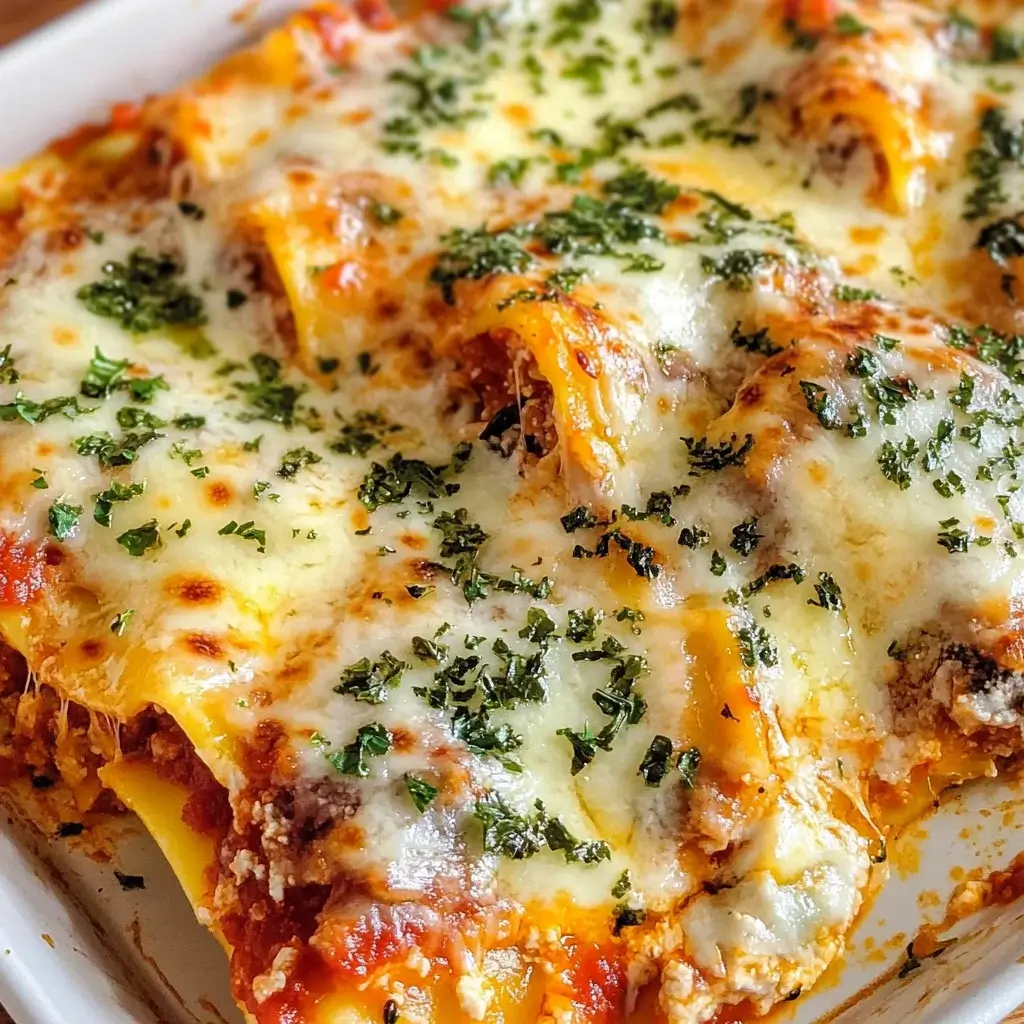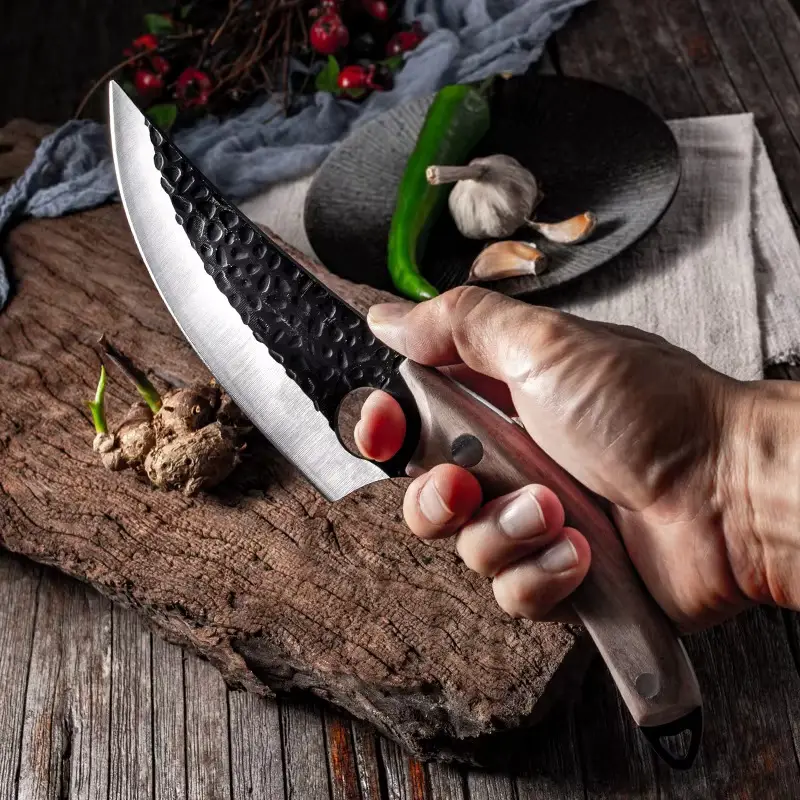It’s funny how some of the best recipes are born out of the desire for ease and efficiency without compromising on flavor. That’s exactly the story behind this sheet pan lasagna recipe, and let me tell you, it’s a game-changer. My family, who are devout lasagna lovers, were initially skeptical when I announced I was making lasagna on a sheet pan. They’re used to the classic, deep-dish version, bubbling away for hours. However, the moment they tasted this quicker, easier rendition, skepticism turned into pure delight. The crispy edges, the perfectly cooked noodles, the same rich, comforting lasagna flavor – it was all there, but without the fuss. This sheet pan lasagna has become a regular weeknight staple in our home, and I’m thrilled to share the recipe and all my tips and tricks with you so you can experience the joy of effortless lasagna too!
Ingredients for Sheet Pan Lasagna
- Lasagna Noodles: (12 oven-ready or regular lasagna noodles) – These form the base of our lasagna layers. Oven-ready noodles are incredibly convenient, but regular noodles will work too, just ensure they are cooked al dente before assembling.
- Ground Beef: (1 pound lean ground beef) – Provides the meaty heartiness of lasagna. You can also use ground turkey, Italian sausage, or a combination for different flavor profiles. Opting for lean ground beef helps keep the lasagna from being overly greasy.
- Italian Sausage: (½ pound Italian sausage, sweet or hot, casings removed) – Adds a depth of flavor and a touch of spice depending on your preference. Sweet Italian sausage offers a milder, savory note, while hot Italian sausage brings a welcome kick.
- Onion: (1 medium yellow onion, chopped) – Forms the aromatic base for our meat sauce. Yellow onions are versatile and become sweet and mellow when cooked.
- Garlic: (3 cloves garlic, minced) – Essential for flavor! Garlic enhances the savory notes of the meat sauce and adds a pungent aroma that is quintessential to Italian cuisine.
- Canned Crushed Tomatoes: (28 ounces canned crushed tomatoes) – The foundation of our rich tomato sauce. Crushed tomatoes provide a good balance of texture and acidity. Look for good quality canned tomatoes for the best flavor.
- Tomato Paste: (2 tablespoons tomato paste) – Intensifies the tomato flavor and adds richness and depth to the sauce. Tomato paste is a concentrated form of tomatoes, adding a significant flavor boost.
- Dried Oregano: (1 teaspoon dried oregano) – A classic Italian herb that complements tomatoes and meat beautifully. Oregano adds a slightly peppery and earthy flavor.
- Dried Basil: (1 teaspoon dried basil) – Another essential Italian herb, basil provides a sweet, slightly peppery, and aromatic note that enhances the overall flavor profile of the lasagna.
- Salt: (1 ½ teaspoons salt, or to taste) – Enhances the flavors of all the ingredients and balances the acidity of the tomatoes. Seasoning is crucial in lasagna, so adjust to your liking.
- Black Pepper: (½ teaspoon black pepper, or to taste) – Adds a touch of spice and depth to the flavor. Freshly ground black pepper is always preferred for the best flavor.
- Ricotta Cheese: (15 ounces ricotta cheese, whole milk or part-skim) – Provides the creamy, cheesy layer in lasagna. Whole milk ricotta is richer and creamier, while part-skim is a lighter option. Drain excess liquid from the ricotta if it seems watery.
- Egg: (1 large egg) – Binds the ricotta mixture together and adds richness. The egg helps the ricotta layer hold its shape during baking.
- Parmesan Cheese: (½ cup grated Parmesan cheese, plus more for topping) – Adds a salty, nutty, and umami-rich flavor to both the ricotta mixture and as a topping. Freshly grated Parmesan is always best for flavor.
- Mozzarella Cheese: (8 ounces shredded mozzarella cheese) – Provides the melty, gooey, and cheesy goodness we all love in lasagna. Part-skim or whole milk mozzarella both work well.
- Fresh Parsley: (¼ cup chopped fresh parsley, for garnish, optional) – Adds a fresh, herbaceous note and a pop of color as a garnish. Parsley also brightens up the flavors of the lasagna.
- Olive Oil: (2 tablespoons olive oil) – Used for sautéing the vegetables and adds a healthy fat and flavor. Extra virgin olive oil is preferred for its richer flavor.
Instructions for Making Sheet Pan Lasagna
- Preheat Oven and Prepare Sheet Pan: Preheat your oven to 400°F (200°C). Lightly grease a large rimmed baking sheet (approximately 18×13 inches) with olive oil or cooking spray. This prevents the lasagna from sticking and ensures easy cleanup.
- Brown the Meat: In a large skillet or Dutch oven, heat olive oil over medium-high heat. Add the ground beef and Italian sausage (if using) and cook, breaking it up with a spoon, until browned and no longer pink. Drain off any excess grease. Draining the grease is important to prevent the lasagna from becoming too oily.
- Sauté Aromatics: Add the chopped onion to the skillet with the browned meat and cook until softened, about 5 minutes. Then, add the minced garlic and cook for another minute until fragrant. Be careful not to burn the garlic, as it can become bitter.
- Simmer the Sauce: Stir in the crushed tomatoes, tomato paste, dried oregano, dried basil, salt, and black pepper. Bring the sauce to a simmer, then reduce heat to low and cook for 15-20 minutes, stirring occasionally, to allow the flavors to meld and deepen. Simmering the sauce is crucial for developing a rich and flavorful lasagna sauce. Taste and adjust seasonings as needed.
- Prepare Ricotta Mixture: While the sauce is simmering, in a medium bowl, combine the ricotta cheese, egg, and grated Parmesan cheese. Mix well until everything is evenly combined. This ricotta mixture will be layered into the lasagna for creaminess and flavor.
- Assemble the Lasagna: Now it’s time to assemble the sheet pan lasagna! Spread a thin layer of the meat sauce evenly over the prepared baking sheet. This base layer prevents the noodles from sticking and adds flavor to the bottom of the lasagna.
- Layer Noodles: Arrange a layer of lasagna noodles over the sauce, slightly overlapping them to cover the entire sheet pan. If using regular lasagna noodles, make sure they are cooked al dente and slightly cooled before layering.
- Spread Ricotta Mixture: Spread half of the ricotta mixture evenly over the noodle layer. Use a spatula or the back of a spoon to gently spread the ricotta in an even layer.
- Add Mozzarella and Sauce: Sprinkle half of the shredded mozzarella cheese over the ricotta layer. Then, spoon half of the remaining meat sauce over the mozzarella cheese, spreading it evenly.
- Repeat Layers: Repeat layers: noodles, remaining ricotta mixture, remaining mozzarella cheese, and finally, top with the remaining meat sauce. This layering technique ensures that each bite of lasagna is packed with flavor and texture.
- Bake the Lasagna: Cover the sheet pan tightly with aluminum foil. This will trap the steam and help cook the noodles through and melt the cheese evenly. Bake in the preheated oven for 25 minutes.
- Uncover and Bake Further: Remove the foil and bake for another 15-20 minutes, or until the cheese is melted, bubbly, and lightly golden brown, and the lasagna is heated through. Baking uncovered for the last portion allows the cheese to become beautifully golden and bubbly.
- Rest and Serve: Let the lasagna rest for 10-15 minutes before cutting into squares and serving. Resting allows the lasagna to set up slightly, making it easier to cut and serve. Garnish with fresh parsley (if using) before serving.
Nutrition Facts for Sheet Pan Lasagna (per serving, estimated)
(Note: Nutritional values are estimates and can vary based on specific ingredients and portion sizes.)
- Serving Size: 1 square (approximately 1/8 of the sheet pan lasagna)
- Calories: 450-550 kcal
- Protein: 30-35g
Preparation Time for Sheet Pan Lasagna
- Prep Time: 30-40 minutes (includes chopping vegetables, browning meat, making sauce, and assembling lasagna)
- Cook Time: 40-45 minutes (baking time in the oven)
- Total Time: 1 hour 10 minutes – 1 hour 25 minutes (from start to finish)
This sheet pan lasagna is designed to be quicker and easier than traditional lasagna, making it perfect for weeknight meals. While the sauce simmering and baking time still require some patience, the hands-on preparation is streamlined and efficient.
How to Serve Sheet Pan Lasagna
Sheet pan lasagna is a versatile dish that can be served in numerous ways to create a complete and satisfying meal. Here are some serving suggestions:
- Classic Side Salad: A simple green salad with a light vinaigrette dressing is a refreshing and healthy accompaniment to rich lasagna. The acidity of the vinaigrette cuts through the richness of the lasagna.
- Garlic Bread or Breadsticks: Serve with warm garlic bread or breadsticks for dipping into the delicious sauce. These are classic Italian sides that complement lasagna perfectly.
- Caesar Salad: A creamy Caesar salad adds another layer of flavor and texture to the meal. The crisp romaine lettuce and creamy dressing contrast nicely with the baked lasagna.
- Roasted Vegetables: Roasted vegetables like broccoli, asparagus, zucchini, or bell peppers provide a healthy and flavorful side dish. Roasting brings out the natural sweetness of vegetables.
- Steamed Green Beans: Simple steamed green beans with a drizzle of olive oil and lemon juice are a light and healthy side option.
- Caprese Salad: A Caprese salad with fresh tomatoes, mozzarella, and basil is a vibrant and colorful side that complements the Italian flavors of lasagna.
- Wine Pairing: Pair with a medium-bodied red wine like Chianti, Merlot, or Cabernet Sauvignon to enhance the Italian dining experience.
For a Family-Style Meal: Place the sheet pan lasagna in the center of the table and let everyone serve themselves. This is a great way to encourage sharing and conversation.
For a More Elegant Presentation: Cut the lasagna into neat squares and arrange them on individual plates. Garnish with fresh parsley or basil sprigs for a visually appealing presentation.
Additional Tips for Perfect Sheet Pan Lasagna
- Don’t Overcook the Noodles (if using regular): If you’re using regular lasagna noodles (not oven-ready), cook them al dente according to package directions. Overcooked noodles will become mushy in the lasagna. They should still have a slight bite to them.
- Don’t Skip Simmering the Sauce: Simmering the sauce for at least 15-20 minutes is crucial for developing depth of flavor. This allows the tomatoes to sweeten and the herbs to infuse the sauce.
- Drain Excess Liquid from Ricotta: If your ricotta cheese seems watery, drain it in a fine-mesh sieve lined with cheesecloth or paper towels for about 30 minutes. This will prevent the lasagna from becoming watery.
- Use Good Quality Ingredients: Using high-quality canned tomatoes, fresh garlic, and good cheeses will significantly impact the flavor of your lasagna. Invest in good quality ingredients for the best results.
- Customize Your Meat: Feel free to use a combination of ground beef, Italian sausage, ground turkey, or even plant-based ground meat substitutes. You can also add cooked mushrooms or other vegetables to the meat sauce.
- Add Vegetables to the Layers: For extra nutrition and flavor, consider adding a layer of sautéed spinach, zucchini, or bell peppers between the ricotta and mozzarella layers.
- Make-Ahead Option: You can assemble the sheet pan lasagna ahead of time, cover it tightly with foil, and refrigerate it for up to 24 hours before baking. This is a great option for meal prepping or entertaining. You may need to add a few extra minutes to the baking time if baking from cold.
- Crispy Edges are Key: One of the best things about sheet pan lasagna is the crispy edges. To maximize crispy edges, ensure the lasagna is spread out relatively thinly on the sheet pan and bake it uncovered for the last portion of the cooking time.
Frequently Asked Questions (FAQ) about Sheet Pan Lasagna
Q1: Can I use oven-ready lasagna noodles for this recipe?
A: Yes, absolutely! Oven-ready lasagna noodles are perfect for this recipe and save you the step of pre-cooking the noodles. They soften beautifully as the lasagna bakes.
Q2: Can I make this lasagna vegetarian?
A: Yes, you can easily make this lasagna vegetarian. Simply omit the ground beef and Italian sausage. You can add sautéed vegetables like mushrooms, zucchini, spinach, bell peppers, or eggplant to the sauce to replace the meat. You can also use a vegetarian meat substitute if desired.
Q3: Can I freeze sheet pan lasagna?
A: Yes, sheet pan lasagna freezes well. Let the baked lasagna cool completely. Then, cut it into squares and wrap individual squares tightly in plastic wrap and then foil, or freeze the entire sheet pan lasagna (cut or uncut) in a freezer-safe container or wrapped tightly in heavy-duty foil. Freeze for up to 2-3 months. Thaw in the refrigerator overnight before reheating in the oven at 350°F (175°C) until heated through.
Q4: What if I don’t have ricotta cheese? Can I substitute something else?
A: While ricotta is traditional in lasagna, you can substitute it with cottage cheese or even a creamy béchamel sauce if needed. Cottage cheese will have a slightly different texture but can still provide a creamy layer. Béchamel sauce will add richness and creaminess but will be a bit more work to prepare.
Q5: My lasagna is watery. What did I do wrong?
A: Watery lasagna can be caused by a few things: not draining excess liquid from ricotta cheese, not simmering the sauce long enough to reduce excess moisture, or using vegetables that release a lot of water without pre-cooking them. Ensure you drain ricotta, simmer the sauce sufficiently, and sauté watery vegetables before adding them to the lasagna.
Q6: Can I make this lasagna ahead of time and bake it later?
A: Yes, you can assemble the sheet pan lasagna up to 24 hours in advance. Cover it tightly with foil and store it in the refrigerator. When ready to bake, preheat the oven and bake as directed, possibly adding a few extra minutes to the baking time if baking from cold.
Q7: Can I use different cheeses in this recipe?
A: Absolutely! You can customize the cheese blend to your liking. Try adding provolone, fontina, or a blend of Italian cheeses for different flavor profiles. You can also use different types of mozzarella, like fresh mozzarella balls, for a creamier texture.
Q8: How do I prevent the lasagna from sticking to the sheet pan?
A: To prevent sticking, make sure to grease the sheet pan thoroughly with olive oil or cooking spray before assembling the lasagna. Also, starting with a thin layer of sauce at the bottom helps create a barrier and prevents sticking. If you are still concerned, you can line the sheet pan with parchment paper, leaving an overhang on the sides for easy removal after baking.
This sheet pan lasagna recipe is truly a fantastic way to enjoy all the comforting flavors of classic lasagna with significantly less effort and time. It’s perfect for busy weeknights, family gatherings, or potlucks. The crispy edges, the layers of flavorful sauce, creamy ricotta, and melted cheese – it’s a guaranteed crowd-pleaser. Give it a try, and I’m confident this recipe will become a beloved staple in your kitchen too! Enjoy!
Print
Sheet Pan Lasagna Recipe
Ingredients
- Lasagna Noodles: (12 oven-ready or regular lasagna noodles) – These form the base of our lasagna layers. Oven-ready noodles are incredibly convenient, but regular noodles will work too, just ensure they are cooked al dente before assembling.
- Ground Beef: (1 pound lean ground beef) – Provides the meaty heartiness of lasagna. You can also use ground turkey, Italian sausage, or a combination for different flavor profiles. Opting for lean ground beef helps keep the lasagna from being overly greasy.
- Italian Sausage: (½ pound Italian sausage, sweet or hot, casings removed) – Adds a depth of flavor and a touch of spice depending on your preference. Sweet Italian sausage offers a milder, savory note, while hot Italian sausage brings a welcome kick.
- Onion: (1 medium yellow onion, chopped) – Forms the aromatic base for our meat sauce. Yellow onions are versatile and become sweet and mellow when cooked.
- Garlic: (3 cloves garlic, minced) – Essential for flavor! Garlic enhances the savory notes of the meat sauce and adds a pungent aroma that is quintessential to Italian cuisine.
- Canned Crushed Tomatoes: (28 ounces canned crushed tomatoes) – The foundation of our rich tomato sauce. Crushed tomatoes provide a good balance of texture and acidity. Look for good quality canned tomatoes for the best flavor.
- Tomato Paste: (2 tablespoons tomato paste) – Intensifies the tomato flavor and adds richness and depth to the sauce. Tomato paste is a concentrated form of tomatoes, adding a significant flavor boost.
- Dried Oregano: (1 teaspoon dried oregano) – A classic Italian herb that complements tomatoes and meat beautifully. Oregano adds a slightly peppery and earthy flavor.
- Dried Basil: (1 teaspoon dried basil) – Another essential Italian herb, basil provides a sweet, slightly peppery, and aromatic note that enhances the overall flavor profile of the lasagna.
- Salt: (1 ½ teaspoons salt, or to taste) – Enhances the flavors of all the ingredients and balances the acidity of the tomatoes. Seasoning is crucial in lasagna, so adjust to your liking.
- Black Pepper: (½ teaspoon black pepper, or to taste) – Adds a touch of spice and depth to the flavor. Freshly ground black pepper is always preferred for the best flavor.
- Ricotta Cheese: (15 ounces ricotta cheese, whole milk or part-skim) – Provides the creamy, cheesy layer in lasagna. Whole milk ricotta is richer and creamier, while part-skim is a lighter option. Drain excess liquid from the ricotta if it seems watery.
- Egg: (1 large egg) – Binds the ricotta mixture together and adds richness. The egg helps the ricotta layer hold its shape during baking.
- Parmesan Cheese: (½ cup grated Parmesan cheese, plus more for topping) – Adds a salty, nutty, and umami-rich flavor to both the ricotta mixture and as a topping. Freshly grated Parmesan is always best for flavor.
- Mozzarella Cheese: (8 ounces shredded mozzarella cheese) – Provides the melty, gooey, and cheesy goodness we all love in lasagna. Part-skim or whole milk mozzarella both work well.
- Fresh Parsley: (¼ cup chopped fresh parsley, for garnish, optional) – Adds a fresh, herbaceous note and a pop of color as a garnish. Parsley also brightens up the flavors of the lasagna.
- Olive Oil: (2 tablespoons olive oil) – Used for sautéing the vegetables and adds a healthy fat and flavor. Extra virgin olive oil is preferred for its richer flavor.
Instructions
- Preheat Oven and Prepare Sheet Pan: Preheat your oven to 400°F (200°C). Lightly grease a large rimmed baking sheet (approximately 18×13 inches) with olive oil or cooking spray. This prevents the lasagna from sticking and ensures easy cleanup.
- Brown the Meat: In a large skillet or Dutch oven, heat olive oil over medium-high heat. Add the ground beef and Italian sausage (if using) and cook, breaking it up with a spoon, until browned and no longer pink. Drain off any excess grease. Draining the grease is important to prevent the lasagna from becoming too oily.
- Sauté Aromatics: Add the chopped onion to the skillet with the browned meat and cook until softened, about 5 minutes. Then, add the minced garlic and cook for another minute until fragrant. Be careful not to burn the garlic, as it can become bitter.
- Simmer the Sauce: Stir in the crushed tomatoes, tomato paste, dried oregano, dried basil, salt, and black pepper. Bring the sauce to a simmer, then reduce heat to low and cook for 15-20 minutes, stirring occasionally, to allow the flavors to meld and deepen. Simmering the sauce is crucial for developing a rich and flavorful lasagna sauce. Taste and adjust seasonings as needed.
- Prepare Ricotta Mixture: While the sauce is simmering, in a medium bowl, combine the ricotta cheese, egg, and grated Parmesan cheese. Mix well until everything is evenly combined. This ricotta mixture will be layered into the lasagna for creaminess and flavor.
- Assemble the Lasagna: Now it’s time to assemble the sheet pan lasagna! Spread a thin layer of the meat sauce evenly over the prepared baking sheet. This base layer prevents the noodles from sticking and adds flavor to the bottom of the lasagna.
- Layer Noodles: Arrange a layer of lasagna noodles over the sauce, slightly overlapping them to cover the entire sheet pan. If using regular lasagna noodles, make sure they are cooked al dente and slightly cooled before layering.
- Spread Ricotta Mixture: Spread half of the ricotta mixture evenly over the noodle layer. Use a spatula or the back of a spoon to gently spread the ricotta in an even layer.
- Add Mozzarella and Sauce: Sprinkle half of the shredded mozzarella cheese over the ricotta layer. Then, spoon half of the remaining meat sauce over the mozzarella cheese, spreading it evenly.
- Repeat Layers: Repeat layers: noodles, remaining ricotta mixture, remaining mozzarella cheese, and finally, top with the remaining meat sauce. This layering technique ensures that each bite of lasagna is packed with flavor and texture.
- Bake the Lasagna: Cover the sheet pan tightly with aluminum foil. This will trap the steam and help cook the noodles through and melt the cheese evenly. Bake in the preheated oven for 25 minutes.
- Uncover and Bake Further: Remove the foil and bake for another 15-20 minutes, or until the cheese is melted, bubbly, and lightly golden brown, and the lasagna is heated through. Baking uncovered for the last portion allows the cheese to become beautifully golden and bubbly.
- Rest and Serve: Let the lasagna rest for 10-15 minutes before cutting into squares and serving. Resting allows the lasagna to set up slightly, making it easier to cut and serve. Garnish with fresh parsley (if using) before serving.
Nutrition
- Serving Size: one normal portion
- Calories: 550
- Protein: 35g






